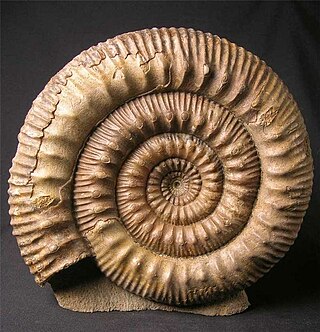
Stephanoceras is an extinct genus of Stephanoceratoid ammonite which lived during the Bajocian. It is the type genus of the family Stephanoceratidae.
Anaklinoceras is a genus of extinct heteromorph ammonite cephalopod that lived in marine environments in what is now Western North America during the Campanian division of the Cretaceous period. Their shells were very similar to the related ammonites of the genus Ainoceras, where the young ammonite's shell coiled helically, and upon reaching adulthood, the youngest coil arched over the older coils.

Aulacostephanus is an extinct ammonoid cephalopod genus from the Upper Jurassic Tithonian belonging to the perisphinctoidean family Aulacostephanidae.
Arieticeras is an extinct genus of cephalopod belonging to the Ammonite subclass.

Apoderoceras is an extinct genus of cephalopod belonging to the ammonite subclass.
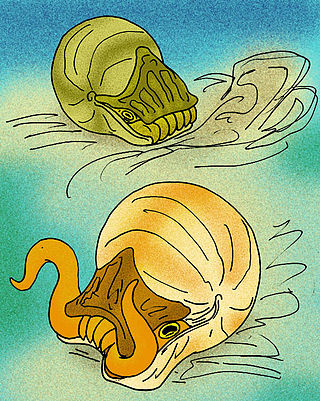
Arcestes is a genus of extinct ceratitid ammonites found in Triassic-aged marine strata.
Austrotrachyceras is a genus of ammonite cephalopod, belonging to the order Ceratitida.
Pseudotoites is an extinct genus from a well-known class of fossil cephalopods, the ammonites. It lived during the Middle Jurassic.
Okribites is a perisphinctoidean ammonite from the middle Jurassic of the Republic of Georgia. It is assigned to the family Parkinsoniidae, a group of strongly but evenly ribbed evolute, commonly discoidal ammonites. Parkinsonia is a related genus.

Exiteloceras is an ammonite genus from the Late Cretaceous.
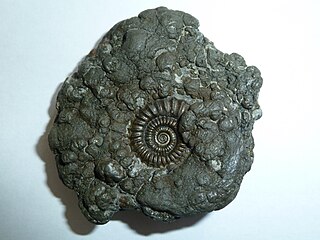
Promicroceras is an extinct ammonite genus from the upper Sinemurian of Europe, named by Leonard Spath in 1925. Promicroceras is included in the family Eoderoceratidae, which is part of the ammonitid superfamily Eoderoceratoidea.

Psiloceras is an extinct genus of ammonite. Psiloceras is among the earliest known Jurassic ammonites, and the appearance of the earliest Psiloceras species form the definition for the base of the Jurassic. Unlike most earlier ammonites, which had complex shell shapes and ornamentation, Psiloceras had a smooth shell.
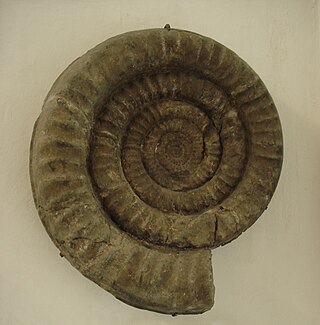
Coroniceras is a genus in the Arietitidae, a family in the ammonitid superfamily Psiloceratoidea, from the lower Sinermurian stage in the Lower Jurassic. It is a sub zone ammonite of the Arnioceras semicostatum Zone.

Macroscaphites is an extinct cephalopod genus included in the Ammonoidea that lived during the Barremian and Aptian stages of the Early Cretaceous. Its fossils have been found throughout most of Europe and North Africa.

Pectinatites is an extinct cephalopod genus belonging to the order Ammonoidea, that lived during the upper Tithonian stage of the Late Jurassic. They were fast-moving nektonic carnivores.
Kilianella is a genus of the ammonite family Neocomitidae. The shell of Kilianella is evolute with a slightly grooved venter and covered by strong, gently flexious, single or bifurcating ribs.

Tragophylloceras is an extinct genus of cephalopod belonging to the Ammonite subclass.
Neophylloceras is an extinct genus of cephalopod belonging to the Ammonite subclass.
Phricodoceras is an extinct genus of cephalopod belonging to the Ammonite subclass.
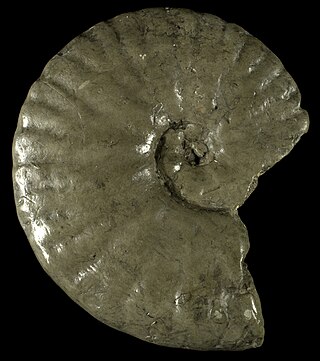
Metoioceras is an extinct genus of cephalopod belonging to the Ammonite subclass which lived during the Cenomanian.












